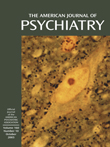A New Anatomical Framework for Neuropsychiatric Disorders and Drug Abuse
Abstract
Histotechnological breakthroughs in the late 1960s paved the way for anatomical discoveries that led to the concepts of the ventral striatal-pallidal system and the extended amygdala. These two macro-anatomical systems, together with the basal nucleus of Meynert, represent the main components of the new anatomy of the basal forebrain. The concept of the ventral striatal-pallidal system provided the first indication of the existence of parallel cortical-striatal-pallidal-thalamic-cortical circuits, which in turn led to the theory of segregated cortical-subcortical reentrant circuits as a conceptual framework for the study of neuropsychiatric disorders. The multifarious symptoms of neuropsychiatric disorders, however, cannot be understood unless the extended amygdala, the basal nucleus of Meynert, and the septal-diagonal band system are also included in such deliberations. All of these systems serve as output channels for activities in the greater limbic lobe, which usually is critically involved in neuropsychiatric disorders. Within the context of the new anatomy of the basal forebrain, structures such as the accumbens, the olfactory tubercle, and the amygdala have lost legitimacy as independent functional-anatomical units at the same time as the major components of the last uncharted territory of the human brain, the substantia innominata, have been identified.



